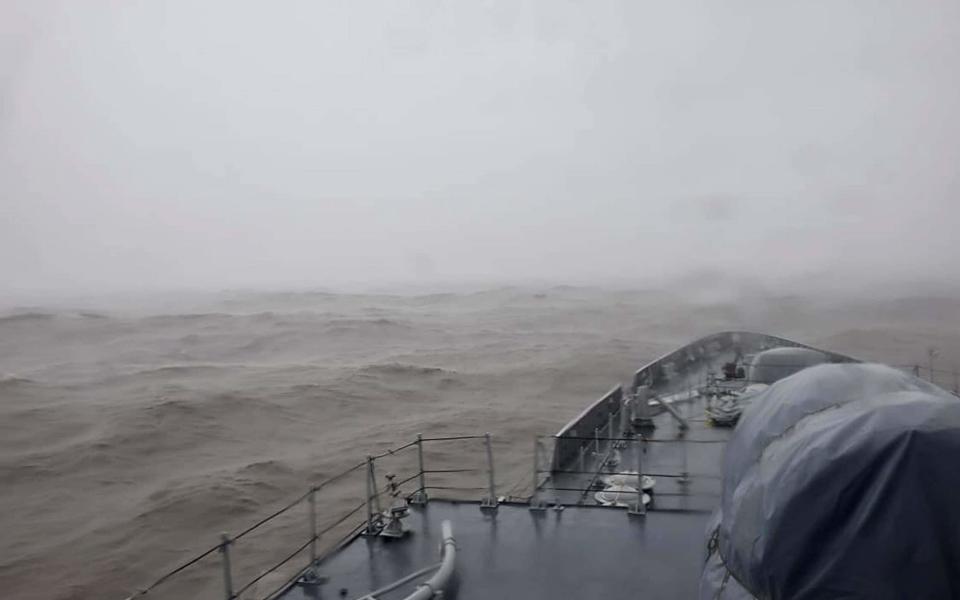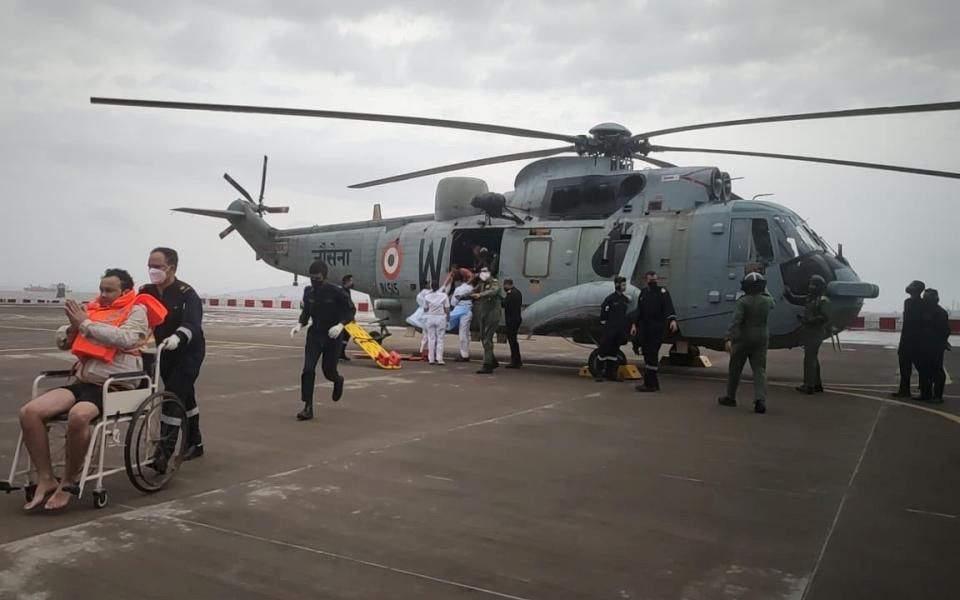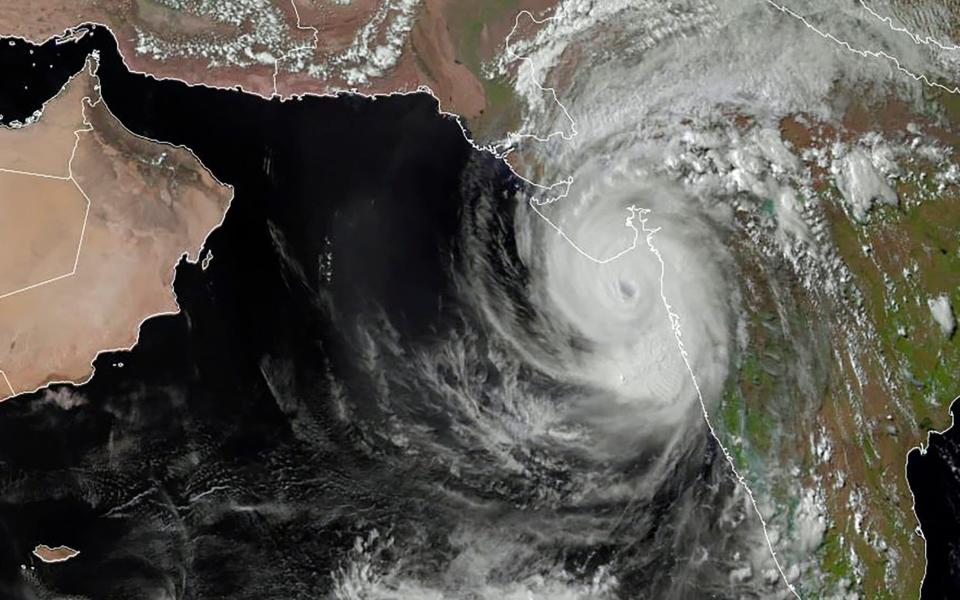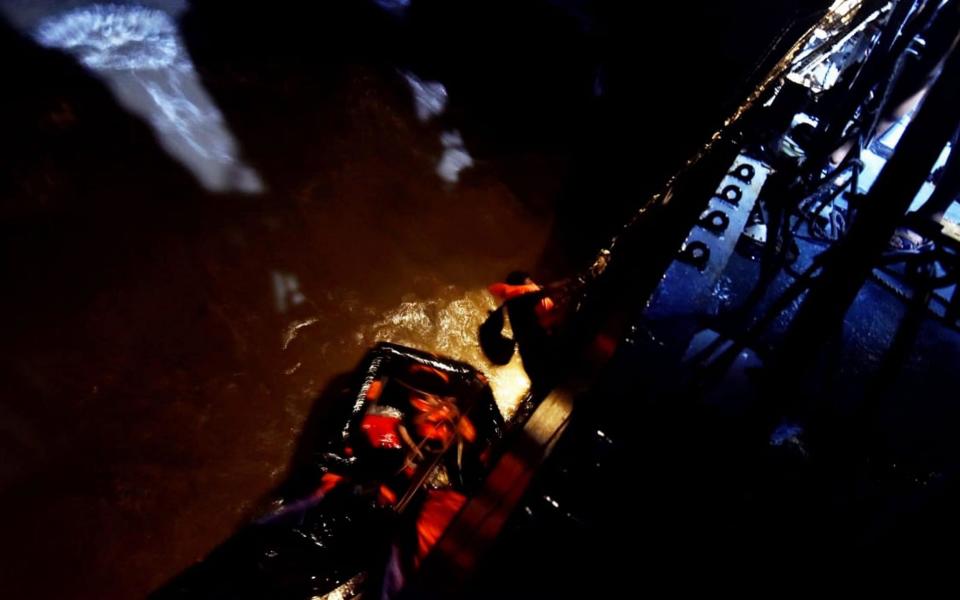More than 90 crew missing after Cyclone Tauktae sinks ship off the coast of Mumbai

More than 90 people are missing after a commercial vessel that became unanchored during the strongest cyclone on India’s western coast in 20 years sank off the coast of Mumbai on Tuesday morning.
A search and rescue operation had been launched by the Indian Navy on Monday night for the 273 crew members of the “Barge 305” ship, which contained employees of the Indian state-run Oil and Natural Gas Corporation (ONGC), after wind speeds of 100 miles per hour had caused the boat to drift into the Arabian Sea.
But, the extreme weather conditions caused by Cyclone Tauktae hampered the rescue operation and only 177 of the crew were rescued before the boat sank.
A further three vessels, containing 700 crew members, are also stranded at sea in the wake of Cyclone Tauktae, although they are said to be in a safe condition.


The Indian authorities have deployed three frontline warships, maritime patrol aircraft and helicopters to comb the sea for remaining crew members.
Two out of the three remaining stranded vessels are adrift off the coast of Mumbai and one boat, which also belongs to the ONGC, has since run aground in a rocky patch of the sea.
The third ship is stranded on an oil rig 57 miles off the shoreline of the western Indian state of Gujarat, where Cyclone Tautkae made landfall overnight.
At least seven people have died in Gujarat after the storm brought gusts of up to 130 miles per hour and a sea surge of three metres, destroying residential buildings in hundreds of coastal villages and uprooting electricity pylons.
“This will be the most severe cyclone to hit Gujarat in at least 20 years. It can be compared with the 1998 cyclone that hit Kandla and inflicted heavy davage,” warned Pankaj Kumar, the state’s revenue secretary.

A clearer picture of the extent of the damage will become apparent on Tuesday as the storm continues to weaken and move inland, allowing rescue teams to safely access Gujarat’s coast.
More than 200,000 people had been evacuated from villages along Gujarat’s shoreline ahead of the cyclone making landfall and almost 100,000 Covid-19 patients were shifted to hospitals in areas inland that were less likely to be impacted by the storm.
There are concerns these hospitals could be overwhelmed by the influx of the new patients, as India’s healthcare system has collapsed under the weight of a devastating second wave of Covid-19. On Monday, India reported 4,329 daily deaths, a new record.
The evacuations may also lead to a renewed surge in Covid-19 cases in Gujarat as residents are having to huddle together in tightly-packed relief shelters.
“Masks have been arranged for people shifted to shelter homes. Efforts are also made to maintain social distancing,” said Sandip Sagale, an official from the city of Ahmedabad.
Oxygen manufacturing and distribution had not been disrupted in Gujarat, according to local officials, while power failures in 16 hospitals had been restored. “Our priority is to clear the roads, so there is no impact on oxygen movement,” said Gaurang Makwana, a leading official in the Bhavnagar district of Gujarat.
Cyclone Tautkae had already killed at least 16 people and left a trail of destruction as the edge of the storm brushed past the coastal states of Kerala, Karnataka, Goa, and Maharashtra on Monday, while the crew of more than 25 fishing boats in the Arabian Sea remain missing.

On Monday, India’s financial capital of Mumbai, situated in the state of Maharashtra, experienced a record-breaking level of daily rainfall. The city again suspended its stuttering Covid-19 vaccination programme as residents were urged to stay inside due to storm surges and severe waterlogging.
Gujarat also put its programme on hold. In Goa, many beach shacks were completely destroyed by tidal surges, with proprietors already struggling to make ends meet due to a drop in tourist footfall caused by the pandemic.
“This cyclone is a terrible double blow for millions of people in India whose families have been struck down by record Covid infections and deaths. Many families are barely staying afloat,” said Udaya Regmi, South Asia head of Delegation, International Federation of Red Cross, in a statement on Monday.
Protect yourself and your family by learning more about Global Health Security

 Yahoo News
Yahoo News 
